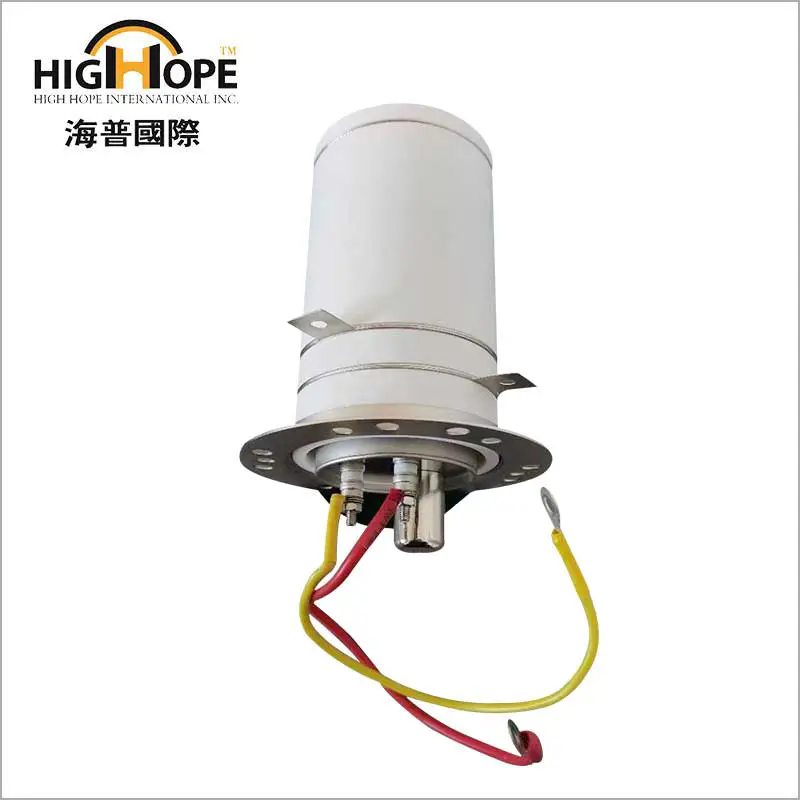Understanding Hydrogen Thyratrons: A Guide to High-Power Switching Devices
2024-08-14
Hydrogen thyratrons are specialized high-power electronic devices used for switching and controlling high-voltage electrical circuits. Known for their ability to handle large amounts of power and high-speed switching, hydrogen thyratrons are crucial components in various applications ranging from pulse generators to radar systems. In this blog, we'll explore what hydrogen thyratrons are, how they work, their key features, benefits, and applications.
What is a Hydrogen Thyratron?
A hydrogen thyratron is a type of gas-filled tube that functions as a high-power switching device. It operates based on the principles of gas discharge, specifically utilizing hydrogen gas to control the flow of electrical current. When triggered, the hydrogen thyratron allows current to flow between its electrodes, effectively acting as a switch.
How Does a Hydrogen Thyratron Work?
1. Structure:
A hydrogen thyratron consists of a glass or ceramic envelope containing hydrogen gas at low pressure. Inside the envelope are three primary electrodes: the cathode, the anode, and the control grid.
2. Triggering:
To initiate the switching process, a control signal is applied to the control grid. This signal causes the hydrogen gas to ionize, creating a conductive path between the cathode and the anode.
3. Ionization:
When the hydrogen gas ionizes, it forms a plasma that allows current to flow freely between the electrodes. This transition from an off state to an on state is nearly instantaneous, enabling high-speed switching.
4. Current Flow:
Once the hydrogen thyratron is triggered, it conducts current with low resistance. The device remains in this conductive state until the current is interrupted or the device is de-energized.
5. Turning Off:
To turn off the hydrogen thyratron, the current flow must be interrupted, either by reducing the current below a certain threshold or by applying a reverse voltage to the electrodes.
Key Features of Hydrogen Thyratrons
1. High Power Handling:
Hydrogen thyratrons can handle very high voltages and currents, making them suitable for applications that require substantial power.
2. Fast Switching:
These devices can switch on and off at extremely high speeds, often in nanoseconds. This rapid switching capability is essential for applications like pulse generators and radar systems.
3. Durability:
Hydrogen thyratrons are designed to be robust and reliable, capable of enduring high stress and frequent switching cycles.
4. Gas Discharge:
The use of hydrogen gas allows for efficient ionization and current conduction, contributing to the high performance of the device.
5. High Voltage Isolation:
The gas-filled envelope provides excellent electrical isolation between the electrodes, allowing for high-voltage operation without direct contact.
Benefits of Hydrogen Thyratrons
1. Efficiency:
Hydrogen thyratrons provide efficient switching with minimal power loss, which is crucial for applications involving large amounts of energy.
2. Reliability:
The robustness of hydrogen thyratrons ensures reliable performance in demanding environments, reducing the likelihood of failure.
3. Speed:
The ability to switch at very high speeds enables precise control and timing in high-power applications, enhancing overall system performance.
4. High Voltage Operation:
Hydrogen thyratrons are capable of operating at high voltages, making them suitable for applications that require substantial electrical power.
5. Low On-Resistance:
When conducting, hydrogen thyratrons have low resistance, leading to efficient power transfer and reduced heat generation.
Applications of Hydrogen Thyratrons
1. Pulse Generators:
Hydrogen thyratrons are used in pulse generators for creating high-energy pulses required in various scientific and industrial applications.
2. Radar Systems:
In radar systems, hydrogen thyratrons are employed to generate and control high-power radio frequency (RF) pulses essential for radar signal transmission and reception.
3. Medical Equipment:
Hydrogen thyratrons are used in certain medical devices, such as X-ray machines and radiation therapy equipment, to control high-voltage pulses.
4. Particle Accelerators:
These devices play a role in particle accelerators, where precise and powerful pulses are needed to accelerate and control particle beams.
5. High-Energy Physics Experiments:
In research facilities, hydrogen thyratrons are used to control high-energy experiments and tests that require rapid and precise switching.
6. Industrial Equipment:
Hydrogen thyratrons can be found in industrial equipment that requires high-power switching, such as laser systems and high-voltage power supplies.
Considerations When Using Hydrogen Thyratrons
1. Cooling Requirements:
Hydrogen thyratrons generate heat during operation, so effective cooling mechanisms are necessary to maintain performance and prevent overheating.
2. Maintenance:
Regular maintenance and inspection are essential to ensure the continued reliability and performance of hydrogen thyratrons.
3. Safety:
Given their high-voltage operation and gas-filled nature, hydrogen thyratrons must be handled with care to avoid electrical hazards and ensure safe operation.
4. Cost:
Hydrogen thyratrons can be relatively expensive, so their use should be justified by the performance requirements of the application.
In Conclusion
Hydrogen thyratrons are powerful and efficient devices that play a critical role in high-energy and high-voltage applications. Their ability to handle substantial power, switch at high speeds, and provide reliable performance makes them invaluable in fields ranging from scientific research to industrial processes.
By understanding the features, benefits, and applications of hydrogen thyratrons, you can better appreciate their role in modern technology and their contribution to various high-power systems. Whether used in pulse generators, radar systems, or medical equipment, hydrogen thyratrons continue to be a cornerstone of advanced electronic systems.



